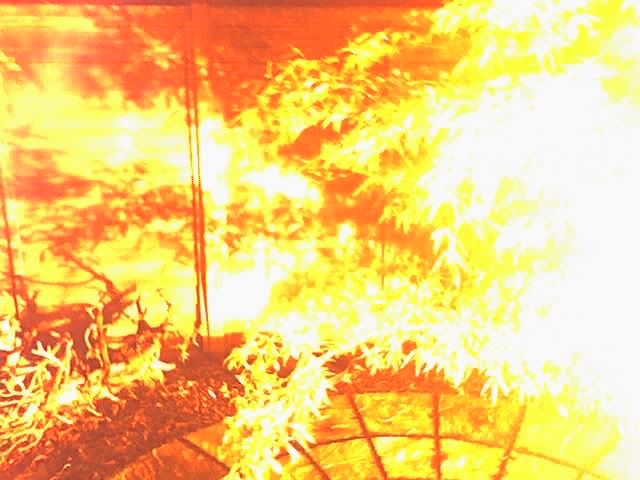Here is a carbonate green - it is light but still a discernible green:
Bright Green (Best of AFN III, p. 115, seen first in Tom Perigrin's Book "Introductory Practical Pyrotecnics")
Potassium Perchlorate ... 30
Barium Carbonate .......... 19
Magnalium ...................... 30
PVC ................................. 12
Red Gum ......................... 4
Dextrin ............................ 4
Unfortunately, it is not easy to light. Triple prime it and you'll be ok. If someone has a Barium Nitrate green that is easy to light and emits a good dark(er) green, I would love to hear about it.
Back to the main topic of this thread - stars that light easily
One method to get a star to light easily is to press it in a square hole star board. The sharp edges make it much easier to light. Of course, you could cut it - but I am such a mess maker when cutting!
In best of AFN III (about page 124, I think), they suggested getting a recessed light cover that has square holes and using it for an el cheapo star board. I tried it and it works fine. Here's a picture: Wichita Buggy Whip
I made a lampblack star (formula from the same page as the reference above) and darn - to paraphrase Burl - those things can be ignited from 10 paces with a cigarette ash. Definitely no prime needed (which is probably intuitive - add a little aluminum and the formula could be a prime itself!).
Lampblack Star from AFN III page 124
Meal ............ 396
Lampblack .... 138
Sulfur .......... 48
Dextrin ........ 18
On the Square Light Reflector, I found an interesting way to "Square" Things Up. Buy two Sheets, 48 x 24 Or Cut one in Two Halfs, 24 x 24, Why.....hehehehe, Well, The only problem with the light board is that they end up being 1/2 x 1/2 x about 3/8ths......I like Cut or Square Stars Square, So heres what you do.....
After you obtain the light reflector/cover/whatever, get a small can of tolulene or xylene, a paint roller with a very short nap and a roller pan etc. Now, pour some of the solvent in the roller pan, and get the roller evenly, completely saturated, but not dripping. Place one of the sheets or half sheets on a very flat surface, garage floor etc, (just has to be relatively flat and solvent proof).
Now take the roller out of the pan and take outside and swing the excess solvent off, your goal is to be able to paint the sheet without alot dripping of solvent through the squares and making uneven surfaces inside the squares (<Makes Removal Easier When They are dead on square and no drips>) Do the same to the other sheet and then carefully flip it over and place on top of the other sheet so the squares line up Perfectly, ( solvent Sides Facing each other
Best Regards,
Stay Green,
Bear


















